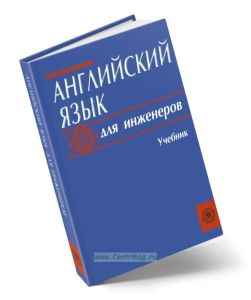- Артикул:00-01015739
- Автор: Шевченко Т.И.
- ISBN: 978-5-534-02833-1
- Обложка: Твердый переплет
- Издательство: Юрайт (все книги издательства)
- Город: Москва
- Страниц: 191
- Формат: 60х90/16
- Год: 2017
- Вес: 316 г
Теоретическая фонетика английского языка: учебное пособие для академического бакалавриата (3-е издание)
С позиций современной науки описаны основные составляющие фонетического строя английского языка в сопоставлении с русским: фонемный состав, слог, акцентная структура слова, фразовое ударение, ритм и интонация. Разработаны темы, определяющие роль фонетики в межкультурной коммуникации: социофонетика, фоностилистика, культура речи.
Каждая глава завершается кратким резюме (Summary) и аннотированным списком рекомендуемой литературы.
Учебник снабжен глоссарием и библиографией. Соответствует Федеральному государственному образовательному стандарту высшего образования четвертого поколения.
Для студентов филологических факультетов университетов и педагогических вузов. Учебник может также представлять интерес для широкого круга читателей, владеющих английским языком.
Contents
Introduction. Phonetics: science or art?
Part I. Phonetics
1.1. Phonetics and communication
1.2. Articulation: how sounds are made and classified
1.2.1. Consonants
1.2.2. Consonants in context
1.2.3. Vwels
1.2.4. Vbwels in context
1.3. Language acquisition: how speech sounds are learned
1.4. Acoustics: how sounds are processed and described
Summary
Further reading
Part II. Phonology
2.1. Phoneme and allophones
2.2. The consonant system of English
2.3. The vowel system of English
2.4. Comparing the sound systems of English and Russian
2.4.1. Consonants: systemic differences
2.4.2. Consonants: realizational and distributional differences
2.4.3. Mjwels: systemic differences
2.4.4. Vowels: realizational and distributional differences
2.4.5. Feature model
2.4.6. Functional features
2.5. Dynamic models
2.5.1. The rise of generative phonology
2.5.2. Autosegmental phonology
2.5.3. Metrical phonology
2.5.4. Prosodic phonology
2.5.5. Lexical phonology
Summary
Further reading
Part III. Syllable
3.1. Syllable as a phonetic and phonological unit
3.2. Structure: universal rules
3.3. Language-specific phonotactics
3.4. Syllable division: experimental data
Summary
Further reading
Part IV. Word Stress
4.1. Definition: stress and accent
4.2. Perceptual and acoustic correlates
4.3. Degrees of word stress
4.4. Typology of word stress
4.5. Functions of word stress
4.6. English word stress location
4.6.1. Roots
4.6.2. Suffixes
4.6.3. Prefixes
4.6.4. Secondary stress
4.6.5. Compounds .
4.7. Word accentual instability
4.8. Comparing English and Russian
Summary
Further reading
Fart V. Intonation and Prosody
5.1. Basic concepts: definitions, components
5.2. Functions of intonation
5.2.1. Syntactic function
5.2.2. Accentual function
5.2.3. Attitudinal function
5.2.4. Semantic function
5.2.5. Discourse function
5.3 Functions of prosodic features
5.3.1. Structural function
5.3.2. Social function
5.4. Universal, typological, specific features
5.4.1. Intonation grouping
5.4.2. Nucleus placement
5.4.3. Nuclear tones
5.4.4 Declination
5.4.5 Intonation of emotions
5.4.6. Key
5.4.7. Intonation acquisition
5.5. Comparing English and Russian
5.6. New trends in English intonation
Summary
Further reading
Part VI. Sociophonetics
6.1. Geographical variation
6.2. Major accent types: British and American
6.2.1. Vowels
6.2.2. Consonants
6.2.3. Word stress
6.2.4. Rhythm
6.2.5. Intonation
6.2.6. British regional features
6.2.7. American regional features
6.3. Social factors and social markers
6.4. Situational variation
6.5. Language change in progress
Summary
Further reading
Part VII. Phonostylistics
7.1. Styles and style-forming means
7.2. Rhythm of verse and prose
7.2.1. Verse
7.2.2. Prose
7.2.3. Spontaneous talk
7.2.4. Stress-timed and syllable-timed rhythms
7.3. Formal and informal talk
7.4. The art of speech: phonetic aspects
Summary
Further reading
Glossary
References
Рекомендуем









